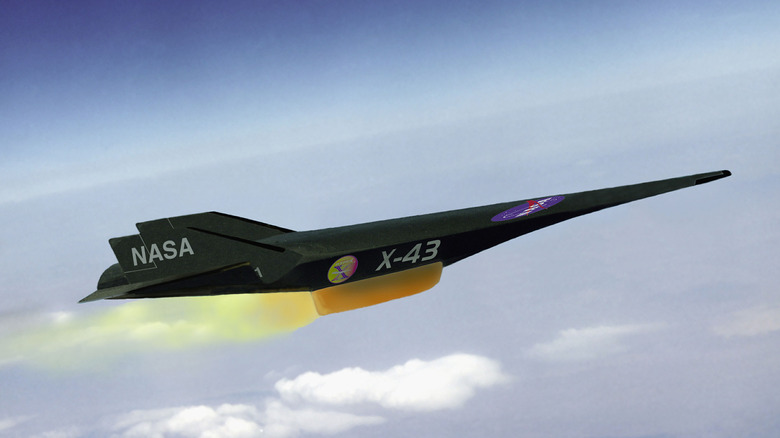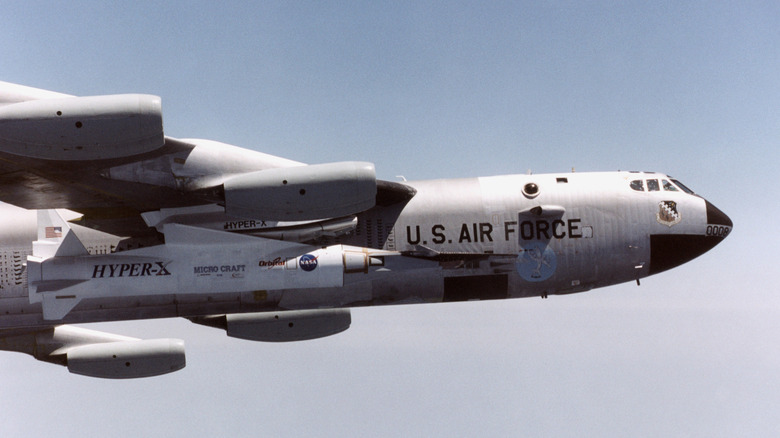X-43A: The Futuristic Scramjet-Powered Aircraft That Set New Records
Going really fast has always been one of the major goals of air-breathing aircraft ("air-breathing" meaning that it's not powered by a rocket, and relies on air for fuel combustion) development since the Wright Brothers first flew in 1903. At first, internal combustion engines like the V-1650 "Merlin" in the P-51 Mustang fighter planes were the fastest means of propulsion.
Then, late in World War II, Nazi engineers developed the first fighter jet with the Messerschmitt Me-262, which could top out at 540 miles per hour. In 1947, Brigadier General Chuck Yeager broke the sound barrier (740 miles per hour) in the rocket-powered Bell X-1. Commercial airliners like the Concorde and the Soviet Tupolev Tu-144 briefly flew faster than the speed of sound, and current fighter jets have no problem going Mach 2.
On November 16, 2004, a NASA-developed unmanned scramjet called the X-43A was able to go over Mach 9.6 (6,800 miles per hour). It broke the record for fastest non-rocket powered aircraft to ever exist, smashing the previous top speed of over Mach 3 set by the SR-71 Blackbird.
The secret behind the scramjet
Rockets, especially the fastest ones, are very large and heavy due to the fuel needed to launch it. The Saturn V rocket that carried the Apollo 11 lander to the Moon was 363 feet tall, and weighed 6.2 million pounds. Anything to cut that massive size out of the equation would be a huge benefit to efficiency. That's where the X-43A comes in.
Instead of a rocket engine that uses liquid oxygen to aid in fuel combustion, the X-43A's scramjet (Supersonic Combustion Ramjet) uses air flowing through the engine at supersonic speeds to ignite the fuel. According to NASA, a scramjet-powered aircraft wouldn't need the heavy, expensive, and potentially dangerous liquid oxygen storage.
The X43-A itself is little more than an aerodynamic 12-foot long wedge, much smaller and lighter than traditional rocket powered aircraft like the 50 foot long X-15, a vehicle that itself achieved speeds of Mach 6.7.
For its record-breaking flight, the X-43A was attached to a B-52B, a plane typically used for long range strategic bombing, and carried aloft to its launching point. The unmanned X-43A relied on a launch vehicle — a Pegasus booster rocket — to get it to the supersonic speeds necessary for the scramjet to work at full-efficiency. It then flew at an altitude of 110,000 feet before safely splashing down 850 miles away at a designated point in Naval Air Warfare Center Weapons Division Sea Range in California.

